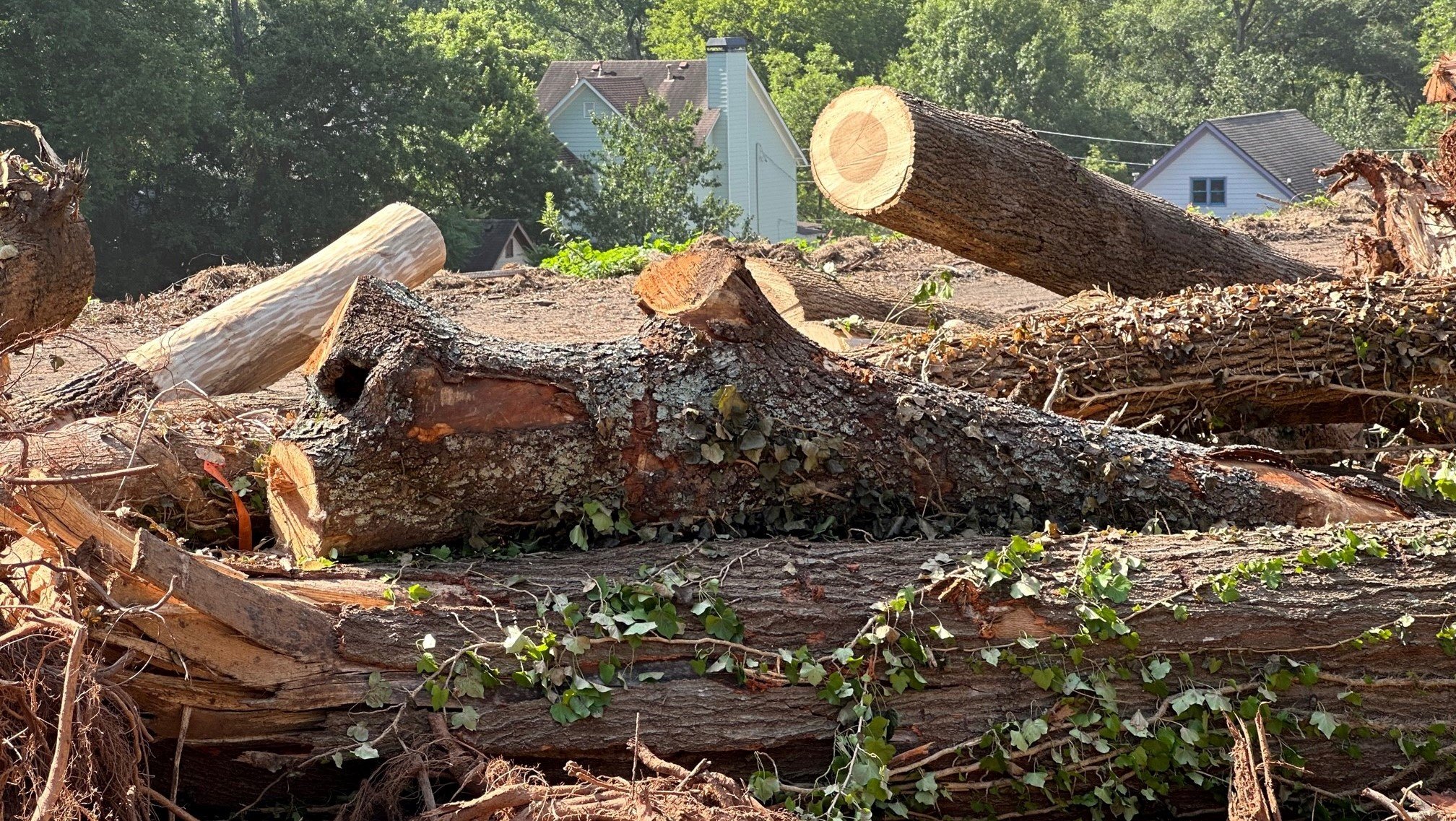Don’t let a streetcar roll over the Beltline Arboretum
Oaks clearcut along the streetcar right of way in Ormewood Park. Photo by Walter Brown.
Welcome to what may turn out to be the hottest week of the year. Now, imagine how unbearable it would be without tree cover.
Actually, you don’t have to imagine. Just walk along an unshaded street like North Avenue west of the Beltline. Then, stroll on the Beltline’s Eastside Trail, cooled by the trees of the Atlanta Beltline Arboretum.
More than a decade ago, in partnership with Atlanta Beltline Inc., Trees Atlanta began work on the arboretum, a linear project to restore the urban ecosystem. Now, some 9,000 trees and shrubs have been planted and cataloged along 13 of the Beltline’s 22 miles. On a few stretches, the canopy has actually grown over the entire trail.
In addition, Trees Atlanta estimates that more than half-a-million native grasses, vines and wildflowers have sprouted from sown seeds into pollinator-friendly meadows. And, of course, many more trees and other plants that weren’t planted by Trees Atlanta are thriving along the corridor.
We’re now reaping the benefits of this rapidly maturing urban forest, along with the accompanying grasslands. Trees and other plants host wildlife, propagate pollinators, reduce flooding, cleanse runoff, stabilize soil and gobble up carbon. More to the point: On a hot August afternoon they can make their immediate surroundings feel cooler by seven to 15 degrees Celsius.
After a decade, the canopy of the Beltline Arboretum is lowering trail temperatures. Photo by Walter Brown.
The arboretum is under threat, however. An informal count along the 1.3 miles from Irwin Street to Ponce de Leon Avenue reveals that construction of Streetcar East Extension would force the removal of more than 225 trees, totaling some 2,600-caliper inches.
With the additional removal of the lovely pollinator meadows, more than five acres of green space will be sacrificed. Extend those numbers along the entire 22 miles of the Beltline, and we could be looking at the loss of some 3,000 trees along with nearly 100 acres of greenspace – all in the name of a fixed-rail concept that isn’t justified by actual transit demand.
Meadows on the streetcar right of way support pollinators and other wildlife. Photo by Walter Brown.
For years, Beltline contractors have already been quietly leveling trees along parts of the Beltline to clear space for the streetcar’s 40-foot right of way. I stumbled across one such scene along the southeast segment of the Beltline, near Berne Street. Dozens of mature, shade-bearing oaks had been clearcut and were piled alongside the path (see the top photo).
Current plans call for the streetcar’s rails to be installed over a concrete surface. Streetcar boosters insist that the rails will ultimately lie on a grass path. Whatever the case, sod grass provides far fewer ecological benefits than trees, or even meadows.
Atlanta Beltline Inc. drawing shows tree-free space needed for the “transit corridor.” Drawing by ABI, with red parts added by BAT for clarification.
Atlanta used to be known as a “City in a Forest.” Trees Atlanta has been working for years to return the city to that status. But the Beltline streetcar would reverse one of the nonprofit’s most notable achievements. This is despite the fact that ABI itself proudly refers to arboretum as “one of the region's largest and most significant” and promises that the project “will grow further with the addition of new trees incorporated into its collections.”
We have a choice. We can keep our valuable urban tree canopy on the Beltline, or replace it with a costly, unneeded streetcar that will forever constrict the growth of the greenway that every year brings joy to millions of residents and visitors.
Let’s accept reality: The Beltline has become a lush linear park whose green features attract users throughout the year by virtue of its beauty and ecological benefits. Trees Atlanta must be allowed to nurture its amazing creation.
– Walter Brown





